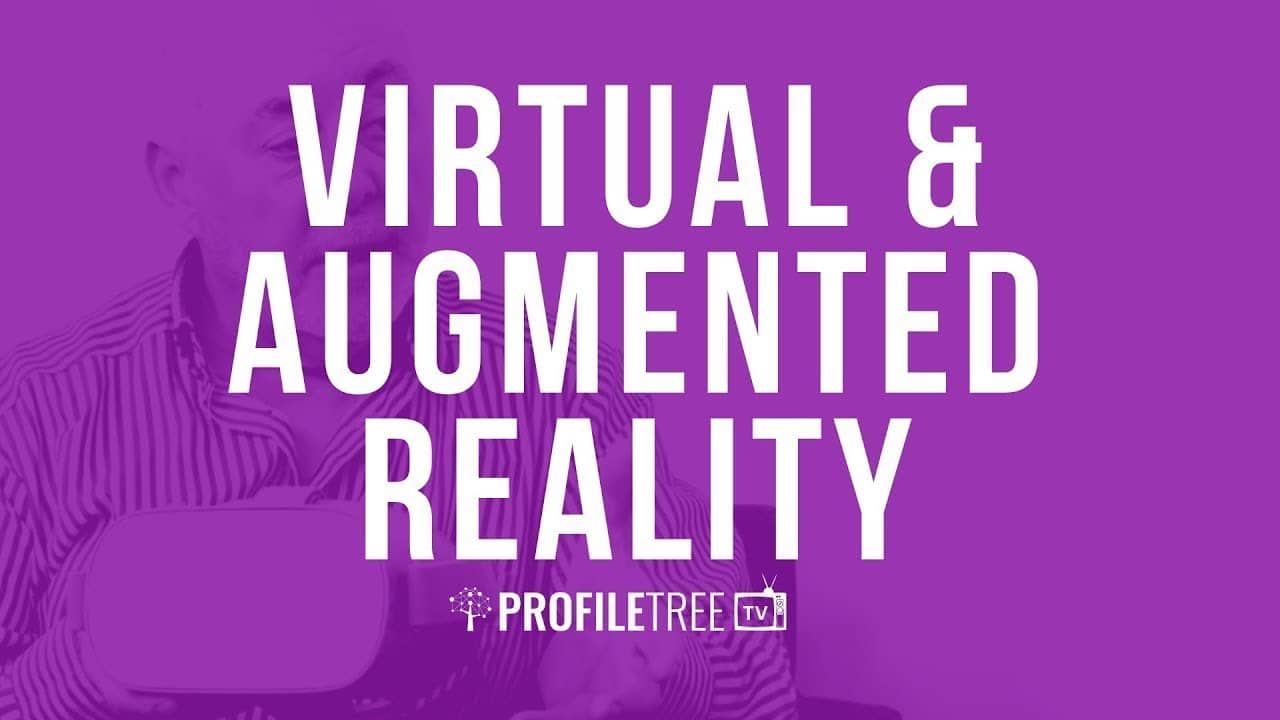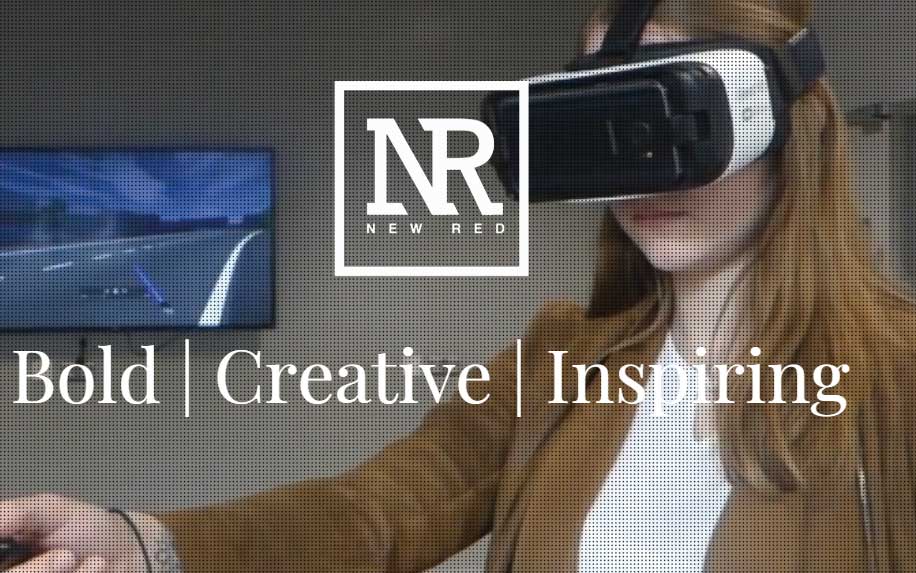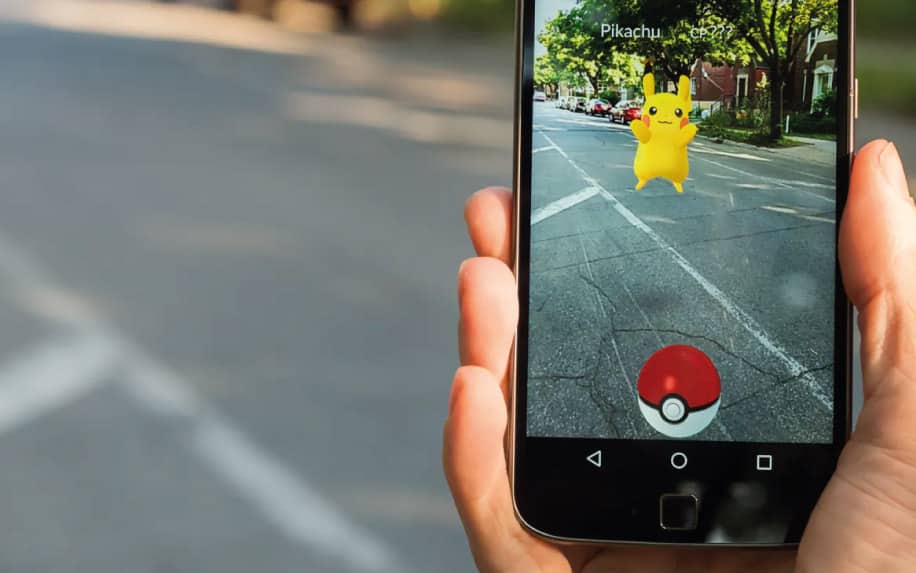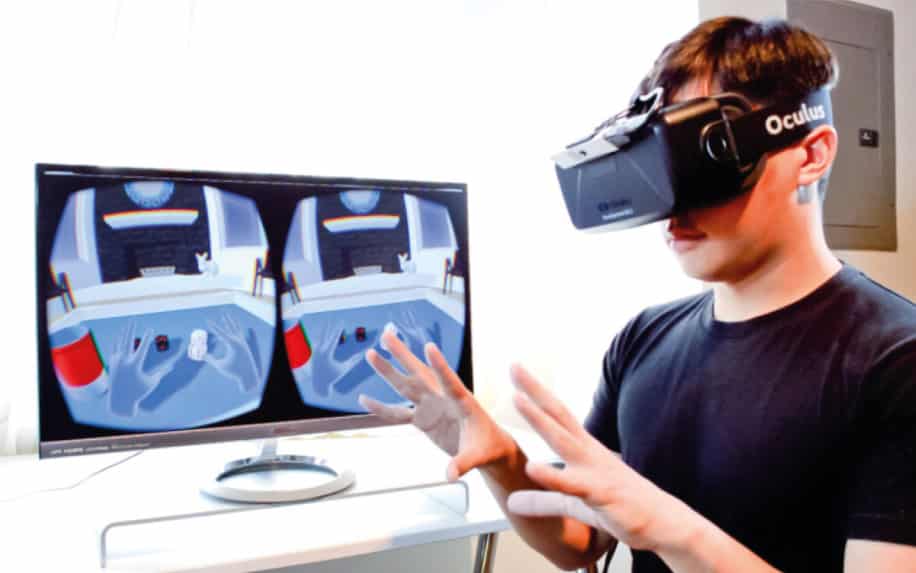Ever wondered about the world of augmented and virtual reality? What is Augmented Reality? You have probably heard of this revolutionary technology – but are curious to know more and how it can affect your business.
In our latest Business Leaders episode, host Ciaran Connolly spoke with Brendan McCourt, Founder of New Red, a company committed to storytelling in extended reality.
In this interview, Brendan gave us a first-hand insight into this fascinating tech trend.
Brendan, who also detailed his incredible career spanning print, broadcast and digital media, explains the differences between augmented and virtual reality, plus where he thinks the future of this technology is going.
To find out Brendan’s interesting views, watch our full interview below, or read on for the highlights.

Table of Contents
From Journalism to Mixed Reality: The Story of New Red
Brendan’s career transitioned from working as a newspaper journalist, down the route of production, where he got his first taste of technology.
“I started out life as a journalist at the Belfast Telegraph, then at the BBC as a Content Producer. I really learnt those skills of how to visualise a story, so I became a visual storyteller.”
After working on mainly news packages and documentaries, Brendan decided to go solo with his new-found love of technology.
“I became excited by new technology as a new way of visual storytelling – and that’s where I got into virtual and augmented reality.”
From then, Brendan created New Red. The company is a new, vibrant young company committed to storytelling in extended reality, which includes everything from ‘completely real’ to ‘completely virtual’.
Having worked with BBC, RTE and Channel 4, they are revolutionising the way businesses tell and people receive stories.

What is Augmented Reality?
But what are these fascinating technologies that caught Brendan’s eye? What do they do, and what makes them so groundbreaking?
As Brendan explains, while both are very different, they offer a wealth of opportunities.
“Virtual reality is when you are immersed in a completely different environment when you put a headset on. There’s two types. There’s virtual reality where it is filmed in a real environment, and you are immersed in a 360 experience that doesn’t change.
“There’s also CGI virtual reality, where you manipulate an environment. You can change it, like open doors etc. It is really engaging and interactive.
It can be used for fun, or even education.”
Augmented reality is probably more familiar to most of us – as many smartphones incorporate the technology through filters on apps like Snapchat, Instagram and Facebook.
“Augmented reality is altering the environment that you’re in now through glasses. When you put them on, they will show you your environment, but with added effects – if you think about the terminator. That’s what it’s like.”
The mixed reality industry is constantly looking for new, convenient ways to incorporate this technology. If you were amazed by Pokemon GO – then there’s plenty more to come from that, says Brendan.
“AR currently has been seen mostly on smartphones, like Pokemon GO. But the disadvantage is that you have to hold your phone up all the time. The advantage with the glasses is that it is easy. You could be on a tourism trip with these glasses on, and it could come up with information about the attraction.”
These technologies have been used mostly for commercial purposes to date. However, companies like Apple and Google have been working furiously to get this technology out to the masses, according to Brendan.

Augmented and Virtual Reality for Business
With business giants like Google and Apple wanting to perfect this technology to boost their offerings – how can smaller businesses leverage this technology? According to Brendan, the possibilities are endless.
“Both technologies are being used by businesses to help them train people more quickly and efficiently. This improves their efficiency all-round, including costs. Plus it gives them an edge on competition.
“It does depend on the business and the budget, but technology is coming down in price. It started out very expensive. The starting price for VR headsets a few years ago was around £400-£500 – and now you can get them for around £200. AR headsets cost around £1200, so are more applicable to large scale enterprises. But when Apple and Google bring their interpretation of this technology out, they’ll drive down the price.”
According to Brendan, the investment is certainly worth it to meet the demand and stay competitive: “Everyone wants this technology, as it makes their lives easier and more engaged.
“Even if you are a smaller business, it is worth having a look at what this technology does now. You may find it will solve a problem for your business. Plus if you’re not doing it – someone else will. Everyone will be looking to get a competitive edge with this technology.”
In business, there are always leaps and bounds we need to take – especially when it comes to technology. If we don’t there’s risks of becoming irrelevant to our audience. Brendan says education on these new advancements is key.
“We’re in the fourth industrial revolution – this is going to change everything. Massive change is coming, so I think it’s important to keep abreast of it, and realise how it could affect and improve your business.”

Differentiating AR from VR and MR: Finding Your Place in the Reality Spectrum
In the bustling world of immersive technologies, Augmented Reality (AR), Virtual Reality (VR), and Mixed Reality (MR) often get muddled together. While they share the common thread of blurring the lines between the physical and digital, their approaches and experiences differ markedly. Let’s dive into their unique characteristics to understand where AR shines:
Augmented Reality (AR):
- Real world overlay: AR seamlessly overlays digital elements onto the existing real-world view. Imagine virtual arrows guiding you through a city map, or dinosaur roars accompanying your backyard fossil hunt.
- Limited immersion: Your physical environment remains the primary focus, enhanced by digital layers. Think Pokemon Go popping up creatures on your smartphone camera feed.
- Interaction with both worlds: You can manipulate both physical and digital elements, like placing virtual furniture in your living room before buying it.
- Complete immersion: VR transports you entirely into a computer-generated environment, blocking out the real world. Explore alien planets, climb Mount Everest, or battle dragons – all from the comfort of your living room.
- Limited physical interaction: While VR controllers simulate hand movements, interactions with the virtual world are primarily digital.
- Focus on the digital world: Your physical body and surroundings recede into the background as you navigate and interact within the virtual landscape.
Mixed Reality (MR):
- Blending both realities: MR seamlessly merges real and virtual elements, where digital objects interact with and respond to the physical world. Imagine virtual building plans hovering over an existing construction site or holograms interacting with real furniture in your room.
- Varying levels of immersion: MR can range from AR-like overlays to VR-like experiences, depending on the technology used.
- Complex interaction dynamics: Both physical and digital elements can be manipulated, creating intricate interactions between the two realities.
AR’s Unique Niche:
So, where does AR stand out in this spectrum? Its strength lies in enhancing the real world, not replacing it. AR provides valuable information, interaction, and entertainment layered on top of your existing reality. It’s like a digital paintbrush adding vibrant strokes to your everyday life, keeping you grounded in the physical world while enriching your experience with digital magic.
Think of it this way:
- AR is like a helpful friend pointing out landmarks on a hike.
- VR is like diving into a fantastical storybook, lost in its immersive world.
- MR is like hosting a magical dinner party where holograms join your real-life guests.
Each technology has its own unique charm and purpose. By understanding their differences, you can appreciate AR’s distinct ability to augment and enrich the world around you without completely severing your connection to reality.
Step into the Augmented World: Immersive Experiences, Interactive Magic
Augmented reality (AR) isn’t just about slapping digital stickers on your surroundings; it’s about stepping into a world where the real and virtual dance hand-in-hand. It’s an immersive playground where your senses engage with digital creations, and your interactions shape the unfolding experience. Let’s explore how AR weaves this digital tapestry of magic:
Sensory Symphony:
AR isn’t confined to the visual realm; it orchestrates a multisensory symphony. Imagine these possibilities:
- Visual Wonders: Witness virtual dinosaurs towering over your park, see furniture materialize in your living room, or follow interactive trails of light guiding you through a museum.
- Auditory Magic: Hear the roar of a virtual dragon as it soars overhead, listen to historical figures whisper tales from ancient walls, or feel the rumble of an approaching train in your augmented city map.
- Tactical Tangibility: Reach out and “touch” a virtual object, manipulate digital controls with your hands, or feel the vibrations of a virtual explosion through your phone screen.
Interactive Playground:
AR isn’t passive; it’s an interactive playground where your actions spark reactions. Imagine these dynamic adventures:
- Direct Manipulation: Move virtual furniture in your room to find the perfect layout, rotate 3D models for closer inspection, or paint with light strokes on an augmented canvas.
- Gesture Control: Point and click on virtual buttons, wave your hand to cast spells, or control virtual drones with intuitive arm movements.
- Real-world Triggers: Scan markers to unlock hidden information, open doors with augmented keypads, or trigger interactive events based on your physical location.
The Power of Connection:
Ultimately, AR’s immersive and interactive nature fosters a deeper connection between you and the digital world. You’re not just observing; you’re participating, shaping, and interacting with the augmented reality as it unfolds. This sense of agency and involvement creates a more engaging and impactful experience, whether you’re learning about history, playing a game, or designing your dream home.
Remember, this is just a starting point. You can personalize it further by:
- Adding specific examples of AR experiences that showcase sensory engagement and user interaction, such as educational apps, games, or interactive art installations.
- Discussing the potential educational benefits of immersive and interactive learning through AR, such as exploring virtual ecosystems or simulating historical events.
- Highlighting the role of AR in creative industries, such as architecture, product design, or even filmmaking, where AR tools allow for interactive prototypes and immersive storytelling.
- Briefly discussing the challenges and limitations of current AR technology in terms of sensory engagement and user interaction, and potential future advancements that could overcome these barriers.
Technical Considerations for AR Experiences
Augmented reality isn’t just digital pixie dust sprinkled on the real world; it’s a complex ballet of hardware and software working in unison. To truly appreciate the magic, let’s peek behind the curtain and explore the essential elements that power an AR experience:
Hardware Stage:
- Your Digital Stage: Smartphones are the most common AR platforms, leveraging their cameras, sensors, and processing power to overlay digital elements onto your view.
- Heads-Up Displays: Smart glasses offer a more immersive experience, projecting AR directly onto your field of vision, freeing your hands for interaction.
- Environment as the Canvas: Specific markers, QR codes, or even natural features like walls and floors can serve as anchor points for digital content, providing the platform for AR magic to unfold.
Software Symphony:
- AR SDKs: Software development kits act as translators, allowing developers to create AR experiences compatible with specific hardware platforms like smartphones or smart glasses.
- Computer Vision and Sensor Fusion: AR software analyzes camera footage, sensor data, and environmental cues to accurately position and integrate digital elements with the real world.
- Rendering Engines: These engines create the graphics and animations that comprise the digital layers of the AR experience, ensuring seamless blending and realistic interaction.
Lighting the Stage:
- Connectivity: Smooth AR experiences require reliable internet connections for downloading content, accessing cloud-based resources, or enabling multiplayer interactions.
- Battery Power: AR applications, especially on mobile devices, can be power-hungry, so optimizing software and choosing efficient hardware are crucial for extended usage.
- Privacy and Security: AR requires access to camera data and potentially location information, making robust security measures and clear user consent essential.
Future Innovations:
The technical landscape of AR is constantly evolving. Advancements in areas like LiDAR sensors, eye-tracking technology, and haptic feedback promise even more immersive and interactive experiences in the future.
Remember, this is just a starting point. You can personalize it further by:
- Discussing the pros and cons of different hardware platforms, such as comparing smartphones with smart glasses for various AR applications.
- Highlighting specific AR SDKs and the functionalities they offer developers.
- Providing real-world examples of how technical considerations, like lighting or processing power, impact the quality and performance of AR experiences.
- Briefly outlining potential future technological advancements that could revolutionize the AR landscape, such as brain-computer interfaces or advanced environmental mapping.
The Future of Augmented and Virtual Reality
The future of technology is always an exciting prospect to think about. Where will our businesses be with this technology in 10 years’ time? As Brendan says, the possibilities really are endless.
“Imagine if the Alexa technology merged with augmented and virtual reality – it would be amazing. A step further would be holograms, where you could see a 3D hologram of a person, who could talk to you and everything.
“AR and VR, married with artificial intelligence, where you ask them a question and they answer you back with the information. That is what is expected to come in 2-5 years.”
When asked about where this technology could go – Brendan says anyone from celebrities to the tourism industry could adopt this amazing advancement.
“You could have George Clooney – celebrities could sell their image to be used in that way. Or even Caesar, taking you around the Roman ruins, and telling you all about it.
“I think where it has to get to is like a pair of sunglasses you put on. There’s so many opportunities out there for this.”
Seeing really is believing!
To find out more exciting insights about augmented and virtual reality, watch Brendan’s full video interview.
The perfect pairing with AR and VR is a digital strategy. If you are wanting to invest more in your digital strategy, whether it be through training or advertising, simply drop us a message and we will be happy to help.
FAQs: Demystifying Augmented Reality
Q: What are some real-world examples of AR applications?
A: AR is already making waves in various fields:
- Education: Interactive exhibits in museums, augmented textbooks, and virtual field trips bring learning to life.
- Gaming: Immerse yourself in fantastical worlds, battle dragons in your living room, or collaborate with friends in augmented quests.
- Retail: Try on clothes virtually, visualize furniture in your home before buying, or get product information through AR overlays.
- Navigation: Augmented maps guide you through cities, translate languages in real-time, and point out landmarks with interactive overlays.
- Creative industries: Architects visualize building plans in real-world locations, artists paint with digital brushes on city walls, and filmmakers create immersive storytelling experiences.
Q: Is AR safe and accessible for everyone?
A: AR technology is still evolving, and concerns exist around battery life, screen time, and potential physical injury due to distraction. It’s essential to use AR responsibly and be aware of your surroundings. However, accessibility features are improving, and developers are creating inclusive experiences for users with disabilities.
Q: What are the ethical considerations surrounding AR?
A: Privacy concerns about data collection and targeted advertising need to be addressed. Additionally, AR’s potential to manipulate perception and impact public spaces raises ethical questions. Open dialogue, clear regulations, and responsible development are key to ensuring ethical advancement of AR technology.
Q: How can I get involved in the AR revolution?
A: Start by trying existing AR apps, explore online tutorials, and attend workshops to learn the basics. Consider developing your own AR applications or joining communities of AR enthusiasts and developers. Remember, active participation and ethical engagement are crucial for shaping the future of AR.
Conclusion: Embracing the Magic of Tomorrow
Augmented reality isn’t just science fiction; it’s a window into a future where the boundaries between the physical and digital blur. We stand at the cusp of a technology with the potential to revolutionize how we learn, work, play, and connect. But with this power comes great responsibility.
By approaching AR with a clear understanding of its potential pitfalls and ethical considerations, we can ensure it enhances our lives without compromising our privacy, safety, or sense of shared humanity.
So, step through the augmented door, explore the possibilities, and contribute to building a future where AR empowers us, inspires us, and connects us in ways we can only begin to imagine. The magic of tomorrow awaits, and it’s up to us to shape it with wisdom, creativity, and a shared vision of a world where the real and digital intertwine to create a brighter, more connected reality.


